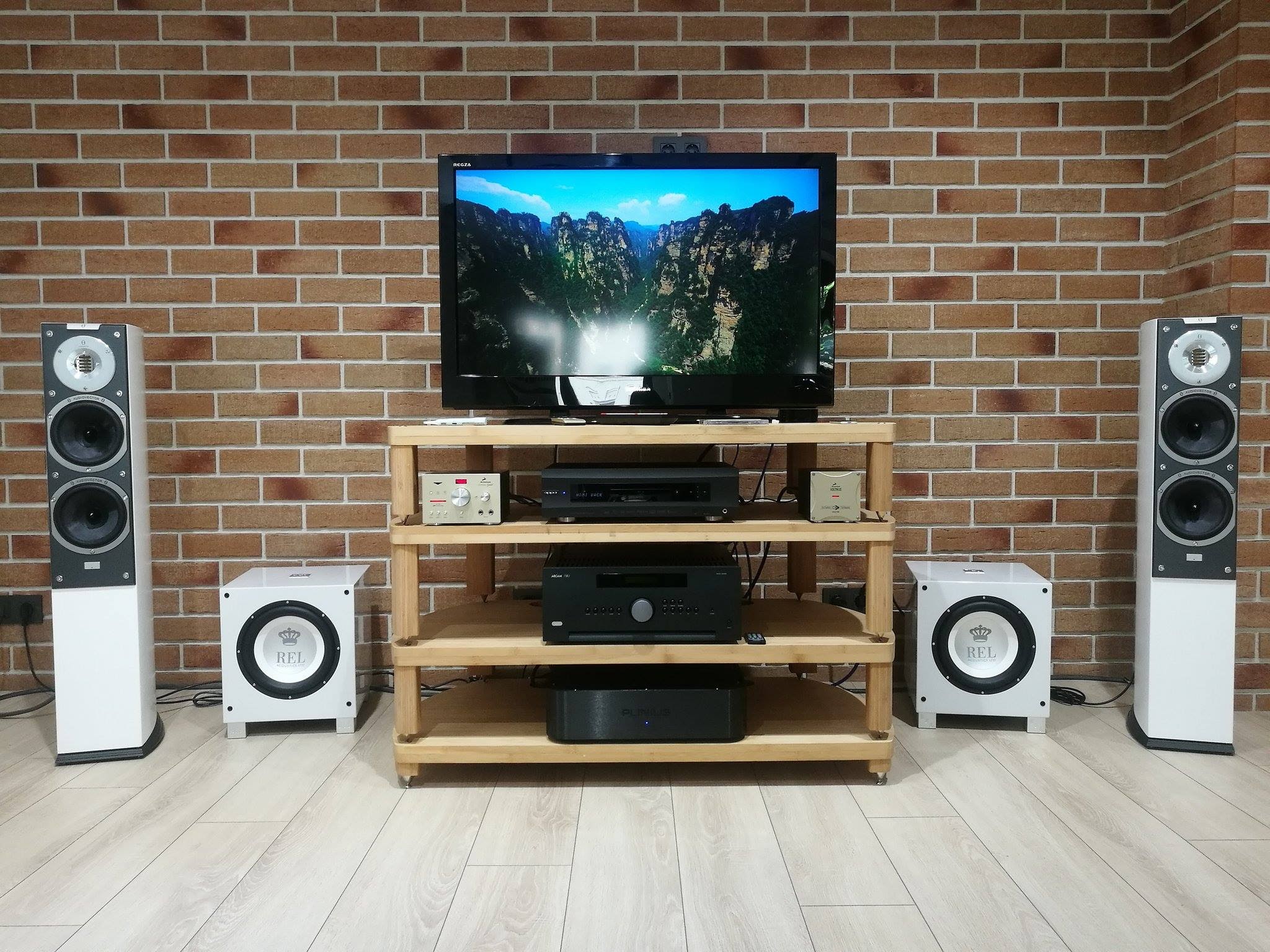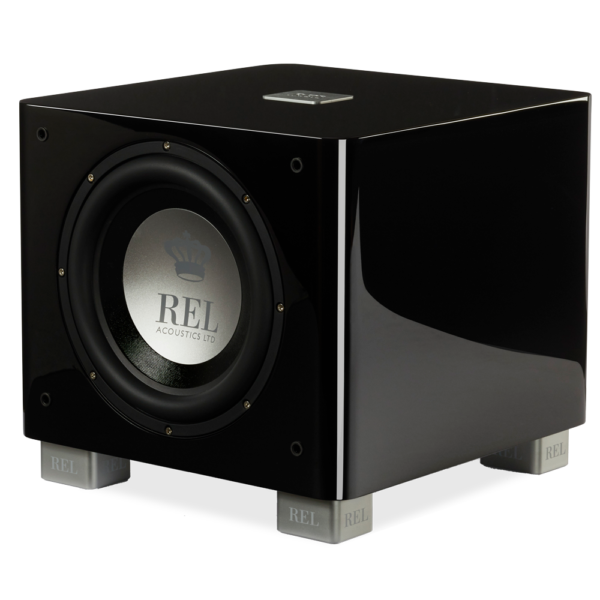Blog
How to Build a Home Theater
How to Build a High Performance Theater Without Breaking the Bank (Phase 1)
 A properly constructed full-blown theater can be an expensive proposition. We advocate for the buildable theater—one in which the end goals are clearly identified early on, and then the theater system is built in stages that make sense. For the sake of brevity, this post deals only with the audio portion of the system but the same clear-eyed sense of purpose applies to the video portion of the theater. Follow along as we start small and grow the system in logical steps as the budget allows. The structure we set out allows for the system to improve and by structuring the order of purchase the way we will largely prevent having to sell off and take a loss on trading in equipment. This is for the customer on a limited initial budget but who truly loves theater and wants to end up with an amazing system for the money, even if it takes a little extra time and—over the course of that time—a few extra months or years depending on your income level.
A properly constructed full-blown theater can be an expensive proposition. We advocate for the buildable theater—one in which the end goals are clearly identified early on, and then the theater system is built in stages that make sense. For the sake of brevity, this post deals only with the audio portion of the system but the same clear-eyed sense of purpose applies to the video portion of the theater. Follow along as we start small and grow the system in logical steps as the budget allows. The structure we set out allows for the system to improve and by structuring the order of purchase the way we will largely prevent having to sell off and take a loss on trading in equipment. This is for the customer on a limited initial budget but who truly loves theater and wants to end up with an amazing system for the money, even if it takes a little extra time and—over the course of that time—a few extra months or years depending on your income level.
Start Small, Build Big: The most basic functional theater can be reduced down to just a few items; a source component or two (let’s start with a basic blu ray player) an AV receiver and a good pair of speakers and a powered subwoofer. We’re going to use B&W speakers as a place card holder, not because we think they’re the best, but because they are well known. And the system needs a great sub because, frankly, it’s not theater without a sub.
Go Big or Go Home: Not what you may think from the title. Having heard well over 500 theaters ranging from modest to epic over the last 10 years, the two biggest mistakes we see novices make are not understanding how important it is to run speakers that can handle Full Range settings in the receiver’s Speaker Set-Up Menu. The second error is overspending early on for the receiver. We are huge advocates of quality electronics—we spend tens of thousands on our own theaters, but when you are building a system over time, the last thing you want to do is spend a small fortune on the one piece in the system that is obsolete the moment it is purchased. If you spent $4,000+ on a huge receiver just 5 years ago, it would be worth little because it is 2 generations of HDMI standards behind the times and is also missing Dolby Atmos which, done properly is capable of creating the third dimension (Height) in a system better and cheaper than any prior effort.
Basic System: Marantz 5012, close to the bottom of their line up at $999 but offers an alphabet soup of capabilities: Atmos, 7.2 channels, 4K, HEOS, Bluetooth, Airplay, something called Hybrid Log Gamma and for those of us under 35, Napster, Deezer, Pandora, 4:4:4 color rez. In other words, about $1M worth of certification charges alone before they build a single unit. And it comes from people who have been making warm, natural sound for 70 years give or take. Why does sound quality matter if you are “just watching movies”? Try watching a movie for 2 hours on a piece of crap system with awful timbral balance—take 2 aspirin and call me, umm, never because it is truly painful and exhausting to sit through that experience.
The amplifier channels are less crappy than some but the truth is that one of the best upgrades you will make (further down the line) will be adding at least a great 2-channel amp from folks whose only income derives from making great sounding separate amplifiers, a little further down the line as you build out the system.
B&W CM5 S2: Great little relatively affordable stand-mounted speaker. At last glance, they retail for around $1600/pr. And they sound good on music as well as home theater, run ‘em Full Range unless you plan to turn it up to 11 and destroy your hearing just before you destroy the mid woofer’s pole piece. For the rest of us, they will play plenty loud enough when bolstered by a small REL to dish out more than most in a medium-sized room can handle.
REL T/7i: Sounds incredible with a pair of CM5s at just $999, hook it up High Level and .1/LFE and sit back and laugh at people who spent three times this much and have a quarter of the system’s performance and style.
Add $150 for a set of B&W’s matching STAV 24 S2 stands and a couple hundred for Audioquest’s outstanding Type 4 speaker cables and you’re still under $4,000 for a system that will work wonderfully in a small to medium-sized space. For urban dwellers in a nice flat, it may be all you will need.
Phase 1 System:
- (2) B&W CM-5 S2 used for Main L-R Speakers.
- (1) REL T/7i 150w powered subwoofer used as the Main Subwoofer.
- (1) Marantz 5012 Av Receiver.
- With cables and stands, the total cost should be in the $4,000 range.
Note: What we did NOT do was spend money at this stage on a center channel speaker (What? Blasphemy since everyone knows you need center channel to handle digital theater). Assuming a 65” or smaller flat panel, I know of no decent modern speakers above, say, $400/pr. that cannot handle a 6-7’ spread between them and create a rock solid center image that eliminates the immediate need for a center channel that we will add in later. The whole idea is to build chunks in the correct order that let us put money where it will do the most good NOW. We did prioritize good main speakers that will become excellent surround speakers in our next phase.
This concludes the first phase of the Buildable Theater. Phases 2 and 3 coming up as well as several upgrade tips to carry the system’s performance to even higher levels.
Click here to read Buildable Theater II to learn more about how you can grow your system into something remarkable over time.










